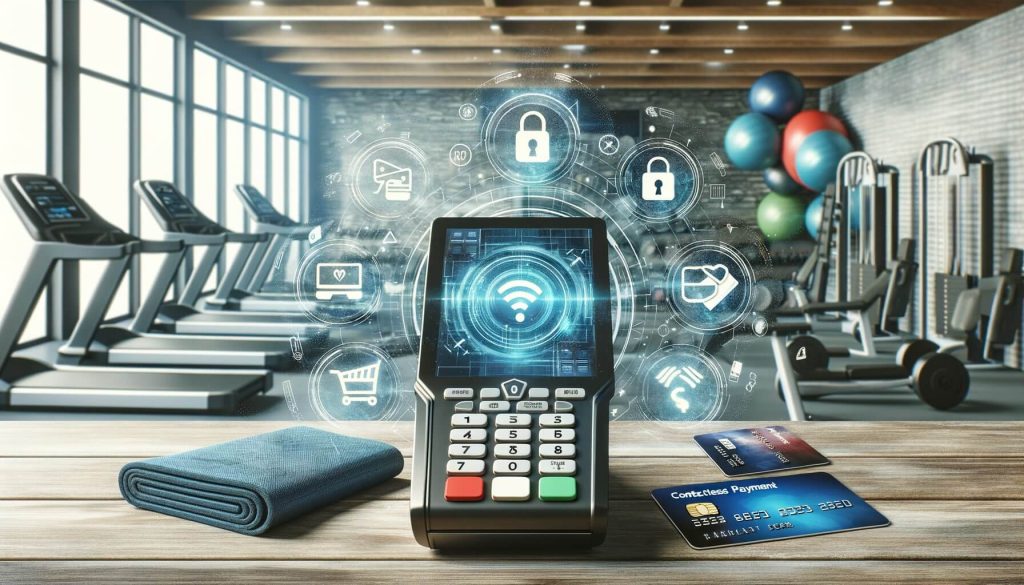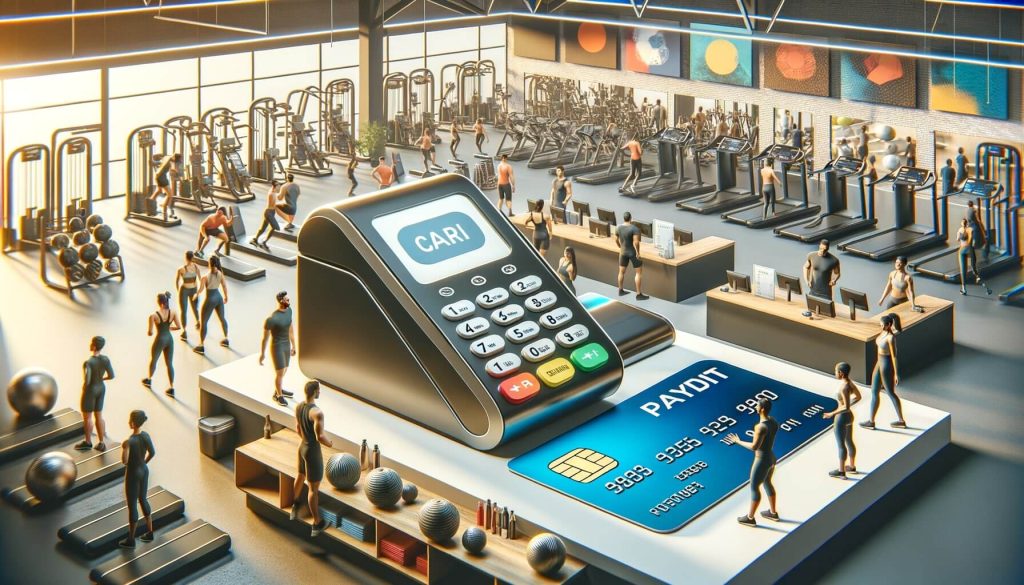
By dev February 5, 2025
Gym payment processing is an essential aspect of running a successful fitness facility. Whether you own a small local gym or a large chain of fitness centers, having a reliable and efficient payment processing system is crucial for the smooth operation of your business.
In this comprehensive guide, we will explore the basics of gym payment processing, including its importance, how to choose the right payment processor, setting up your system, accepting credit and debit card payments, implementing mobile payment solutions, ensuring payment security, managing recurring payments and membership subscriptions, integrating payment processing with your management software, and addressing common FAQs.
By the end of this article, you will have a thorough understanding of gym payment processing and be equipped to make informed decisions for your fitness business.
Understanding the Importance of Payment Processing for Gyms

Payment processing plays a vital role in the success of any gym or fitness center. It is the mechanism through which you collect payments from your members for their memberships, classes, personal training sessions, and other services. Without an efficient payment processing system in place, you risk losing revenue, frustrating your members, and hindering the growth of your business. Here are some key reasons why payment processing is important for gyms:
1. Convenience for Members: Offering multiple payment options, such as credit and debit cards, allows your members to choose the method that is most convenient for them. This flexibility enhances their overall experience and satisfaction with your gym.
2. Revenue Generation: A seamless payment processing system ensures that you receive timely payments from your members, leading to a steady cash flow and increased revenue for your gym.
3. Membership Retention: By providing hassle-free payment options and automating recurring payments, you can improve member retention rates. Members are more likely to continue their memberships if the payment process is smooth and convenient.
4. Operational Efficiency: An efficient payment processing system saves time and effort for your staff by automating payment collection and reducing manual tasks. This allows your team to focus on providing excellent customer service and growing your gym.
Choosing the Right Payment Processor for Your Gym

Selecting the right payment processor for your gym is a critical decision that can impact the success of your business. With numerous options available in the market, it is essential to consider several factors before making a choice. Here are some key considerations when choosing a payment processor for your gym:
1. Payment Options: Ensure that the payment processor supports a wide range of payment options, including credit and debit cards, mobile payments, and online payments. This allows you to cater to the preferences of your members and maximize convenience.
2. Pricing Structure: Understand the pricing structure of the payment processor, including transaction fees, monthly fees, and any additional charges. Compare the costs of different processors to find the most cost-effective solution for your gym.
3. Integration with Gym Management Software: If you use gym management software to streamline your operations, check if the payment processor integrates seamlessly with your software. This integration can simplify your workflow and provide a unified system for managing payments and member data.
4. Security Measures: Payment security is of utmost importance to protect your gym and your members’ sensitive information. Ensure that the payment processor complies with industry standards and offers robust security measures, such as encryption and tokenization, to safeguard transactions.
Setting Up Your Gym Payment Processing System

Once you have chosen a payment processor for your gym, it is time to set up your payment processing system. This involves several steps to ensure a smooth and efficient process for collecting payments from your members. Here is a detailed guide on setting up your gym payment processing system:
1. Gather Required Information: Before setting up your payment processing system, gather all the necessary information, such as your gym’s legal name, address, tax identification number, and bank account details. This information will be required during the setup process.
2. Create an Account: Sign up for an account with your chosen payment processor. Provide the required information and complete any necessary verification steps.
3. Configure Payment Settings: Set up your payment settings, including the types of payments you will accept (credit cards, debit cards, etc.), currencies, and any additional payment options you want to offer, such as mobile payments or online payments.
4. Customize Payment Forms: Customize the payment forms that your members will use to make payments. Add your gym’s branding, logo, and any relevant fields or information you require from your members during the payment process.
5. Test the System: Before going live, thoroughly test your payment processing system to ensure that it is functioning correctly. Process test transactions using different payment methods to verify that payments are being processed accurately.
6. Train Staff: Train your staff on how to use the payment processing system, including how to process payments, handle refunds, and troubleshoot any issues that may arise. Ensure that they are familiar with the system’s features and functionalities.
Accepting Credit and Debit Card Payments at Your Gym

Accepting credit and debit card payments is a fundamental aspect of gym payment processing. It allows your members to conveniently pay for their memberships, classes, and other services using their preferred payment method. Here are the steps to start accepting credit and debit card payments at your gym:
1. Choose a Card Reader: Select a card reader that is compatible with your payment processor and suits your needs. There are various options available, including traditional countertop terminals, mobile card readers, and virtual terminals for online payments.
2. Connect the Card Reader: Connect the card reader to your gym’s computer or mobile device using the provided cables or wireless connectivity options. Ensure that the card reader is securely connected and functioning properly.
3. Train Staff on Card Processing: Train your staff on how to process credit and debit card payments using the card reader. Teach them how to swipe or insert cards, enter payment amounts, and obtain authorization for transactions.
4. Display Accepted Card Logos: Display the logos of the credit and debit cards you accept at prominent locations in your gym, such as the front desk and payment counters. This helps members identify the payment options available to them.
5. Ensure Card Security: Follow best practices for card security to protect your gym and your members’ card information. This includes securely storing card data, using encryption for card transactions, and complying with Payment Card Industry Data Security Standard (PCI DSS) requirements.
Implementing Mobile Payment Solutions for Gym Members
In today’s digital age, mobile payment solutions have gained significant popularity. Implementing mobile payment options for your gym members can enhance their experience and provide added convenience. Here are the steps to implement mobile payment solutions at your gym:
1. Choose a Mobile Payment App: Select a mobile payment app that integrates with your payment processor and offers the features you require. Look for apps that support various payment methods, have a user-friendly interface, and provide robust security measures.
2. Set Up the Mobile Payment App: Install the mobile payment app on your gym’s devices, such as tablets or smartphones. Configure the app with your payment processor’s settings and ensure that it is connected to your gym’s account.
3. Train Staff and Members: Train your staff on how to use the mobile payment app to process payments. Educate them on the features and functionalities of the app, such as accepting payments, generating receipts, and handling refunds.
4. Promote Mobile Payments: Inform your members about the availability of mobile payment options at your gym. Display posters or signs promoting mobile payments, include information in your newsletters or emails, and train your staff to encourage members to use the mobile payment app.
5. Provide Support: Offer support to members who may have questions or difficulties using the mobile payment app. Have dedicated staff available to assist members with setting up the app, making payments, or resolving any issues they may encounter.
Ensuring Payment Security and Fraud Prevention at Your Gym
Payment security and fraud prevention are critical considerations when implementing a gym payment processing system. Protecting your gym and your members’ financial information is essential to maintain trust and prevent financial losses. Here are some measures to ensure payment security and fraud prevention at your gym:
1. PCI DSS Compliance: Ensure that your gym’s payment processing system complies with the Payment Card Industry Data Security Standard (PCI DSS). This set of security standards helps protect cardholder data and prevent fraud. Regularly review and update your security measures to maintain compliance.
2. Encryption and Tokenization: Implement encryption and tokenization technologies to secure card transactions and protect sensitive data. Encryption ensures that card information is securely transmitted, while tokenization replaces card data with unique tokens, reducing the risk of data breaches.
3. Fraud Detection Tools: Utilize fraud detection tools provided by your payment processor or third-party vendors. These tools analyze transaction patterns, identify suspicious activities, and help prevent fraudulent transactions.
4. Two-Factor Authentication: Implement two-factor authentication for online payments and member account access. This adds an extra layer of security by requiring users to provide additional verification, such as a unique code sent to their mobile device, in addition to their login credentials.
5. Staff Training: Train your staff on how to identify and handle potential fraud situations. Teach them to recognize suspicious behavior, verify cardholder identities, and follow proper procedures for handling disputed transactions or chargebacks.
Managing Recurring Payments and Membership Subscriptions
Recurring payments and membership subscriptions are common in the fitness industry. Managing these payments efficiently is crucial for maintaining a steady revenue stream and ensuring member satisfaction. Here are some tips for managing recurring payments and membership subscriptions at your gym:
1. Automated Billing: Implement automated billing for recurring payments to streamline the process and reduce manual tasks. Set up recurring payment schedules for memberships, classes, or personal training sessions, and automatically charge members’ cards on the specified dates.
2. Clear Membership Terms: Clearly communicate the terms and conditions of your membership subscriptions to your members. Provide information on payment amounts, billing cycles, cancellation policies, and any additional fees or charges.
3. Membership Management Software: Consider using membership management software that integrates with your payment processor. This software can automate recurring payments, track membership details, and provide reports on revenue and member retention.
4. Payment Reminders: Send payment reminders to members before their recurring payments are due. This can be done through email, SMS, or push notifications, ensuring that members are aware of upcoming charges and have sufficient funds in their accounts.
5. Cancellation and Refund Policies: Establish clear cancellation and refund policies for membership subscriptions. Communicate these policies to your members and ensure that your staff is trained to handle cancellation requests and process refunds promptly.
Integrating Gym Payment Processing with Your Management Software
Integrating your gym payment processing system with your management software can streamline your operations and provide a unified platform for managing payments, member data, and other aspects of your business. Here are the steps to integrate gym payment processing with your management software:
1. Choose Compatible Software: Select management software that is compatible with your payment processor. Research different software options and ensure that they offer integration capabilities with your chosen payment processor.
2. Set Up Integration: Follow the instructions provided by your management software and payment processor to set up the integration. This may involve configuring API keys, establishing secure connections, and mapping data fields between the two systems.
3. Test Integration: Test the integration between your payment processor and management software to ensure that data is being synchronized accurately. Process test transactions, verify that member data is being updated correctly, and resolve any issues that may arise.
4. Train Staff: Train your staff on how to use the integrated system effectively. Teach them how to access payment information, generate reports, and utilize the features provided by the management software to streamline their workflows.
5. Monitor and Maintain Integration: Regularly monitor the integration between your payment processor and management software to ensure its continued functionality. Stay updated with software updates and security patches to maintain a secure and efficient system.
Common FAQs about Gym Payment Processing
Q1. What payment options should I offer at my gym?
A1. It is recommended to offer a variety of payment options, including credit and debit cards, mobile payments, and online payments. This allows your members to choose the method that is most convenient for them.
Q2. How do I choose the right payment processor for my gym?
A2. When choosing a payment processor, consider factors such as payment options supported, pricing structure, integration with management software, and security measures. Compare different processors to find the best fit for your gym’s needs.
Q3. How can I ensure the security of card transactions at my gym?
A3. To ensure payment security, comply with PCI DSS requirements, implement encryption and tokenization technologies, utilize fraud detection tools, and train your staff on identifying and handling potential fraud situations.
Q4. How can I manage recurring payments and membership subscriptions efficiently?
A4. Implement automated billing for recurring payments, clearly communicate membership terms, consider using membership management software, send payment reminders, and establish clear cancellation and refund policies.
Q5. How do I integrate gym payment processing with my management software?
A5. Choose management software that is compatible with your payment processor, follow the integration instructions provided, test the integration, train your staff, and regularly monitor and maintain the integration.
Conclusion
Gym payment processing is a crucial aspect of running a successful fitness facility. By understanding the importance of payment processing, choosing the right payment processor, setting up your system, accepting credit and debit card payments, implementing mobile payment solutions, ensuring payment security, managing recurring payments and membership subscriptions, and integrating payment processing with your management software, you can streamline your operations, enhance member satisfaction, and drive revenue growth.
By following the comprehensive guide provided in this article, you will be well-equipped to navigate the world of gym payment processing and make informed decisions for your fitness business.